1 Comment
Many people might be surprised that the question is even being posed. What could be wrong about receiving a vaccine, when we know that vaccinations save lives? The moral issue arises from the fact that vaccine development and testing often make use of cell lines derived from either the tissue of aborted fetuses or destroyed human embryos. Therefore, reception of a vaccine developed and produced from this unethical research presents us with a dilemma that seriously engages our conscience. The short answer from our Bishops on whether it's okay to be vaccinated against COVID-10 is: Yes, it is. Learn more about it from the Bishop's letter re: COVID-19 Vaccine.
Christmas: A Light of Faith, Hope, and Love in our World The people who walked in darkness have seen a great light… (Isaiah 9:2) This Christmas Eve we will hear the words of the prophet Isaiah ring out “the people who walked in darkness have seen a great light”. How does one begin to describe the experiences of this past year? It is as if a shadow has been cast over our lives by a “pandemic of darkness”. Many here and across the globe have lost their lives to COVID-19 with their families left to mourn their passing, many have survived the virus with lasting effects, and others have risked their lives to provide medical care and to conduct the scientific research leading to a vaccine. It has left many marked by profound sadness, isolation, and fear.
There is also some understandable impatience with the health precautions and restrictions that place limits on our normal ordinary human interactions such as work, social activities, family interactions, and religious gatherings. Yes, we all have had to make sacrifices. It is into this world, here and now, that God’s love is being revealed. It is a light that comes to us in darkness. The Nativity of Christ which we celebrate at Christmas is not merely a recollection of an historical event or of a birth which took place in the past. It fixes our gaze on the future, on his second coming at the end of the ages while acknowledging His presence here and now in our lives, each and every day. With the challenges that we have faced this year we might be tempted to give up, to not see Christmas and its celebration through this light of faith, hope and love. A prayer to the Immaculate Conception beautifully captures the action of God and the docility of our Blessed Mother, “Father, the image of the Virgin is found in the Church. Mary had a faith that your Spirit prepared and a love that never knew sin, for you kept her sinless from the first moment of her conception. Trace in our actions the lines of her love, in our heart her readiness of faith”. God has traced the lines of Mary’s readiness of faith and love through our lives during this Advent season in the acts of love and sacrifice which each of us have freely accepted for the good and the wellbeing of others. They have probably gone unnoticed in the eyes of the world, much like Mary’s “fiat”, which was a simple response of yes to accepting the will of God. In our Catholic tradition, Mary has always been a type or model of the Church’s response to the will of God. As Mary came to believe, to conceive and to give birth to Jesus, the Son of God, this same action of God tracing His grace and love in our lives can come to birth this Christmas with a renewed sense of hope. As St. Ambrose said, “You also are blessed because you have heard and believed. Home - I am Blessed 2020A soul that believes both conceives and brings forth the Word of God and acknowledges his works. Let Mary’s soul be in each of you to proclaim the greatness of God” (Office of Readings, Monday of the 4th Week of Advent). This year as we approach the celebration of Christmas, the I Am Blessed campaign of the Diocese is once again an opportunity to witness to our faith despite the suffering we may be experiencing, to recognize the blessings from God in the midst of our daily reality, and to seek out opportunities to be a blessing for others through prayer, giving, and in our acts of service for others. As we prepare for Christmas, and the octave of this feast, let us rediscover how connected we are to one another. I invite us to experience in this coming year the hope that is found in the promises of God as did Mary. In the words of Pope Francis, Christmas is the feast that “returns us to the horizon of hope, a horizon that does not disappoint because it is founded on the Word of God” (Angelus, 1st Sunday of Advent, December 1, 2013). The incarnate Word, the nearness of God which we celebrate on the Solemnity of the Nativity of Jesus, has transformed human history and can restore in each of us this profound gift of hope. In this time of pandemic when we look for that light in our darkness, I offer my Christmas greetings and heartfelt best wishes to all the faithful of the Diocese. I express my gratitude and esteem for the witness of pastoral charity exhibited by the priests and the deacons who exercise the role of Christ the Servant, the presence of the religious communities that offer their unique charisms and a witness to holiness, the co-responsibility of the lay faithful - including the volunteers and parish staff - as a living sign of Christ in the world, the role of the teachers and catechists in our schools and parishes, and the essential gift of family life that is shared so readily in an expression of sacrificial love and an openness to new life. Finally, to those who have both in the past and now serve at the Catholic Pastoral Centre, I am grateful for the dedication and cooperation that is expressed in our desire to be of service to the parishes of the Diocese in these challenging times. May God bestow his blessings upon all of us as we look forward in faith, hope and love to the coming year. Sincerely yours in Christ, + William T. McGrattan Bishop of Calgary Download Letter in PDF
In this month of October Pope Francis’ prayer intention is for the Laity’s Mission in the World. At the Second Vatican Council one of the most important contributions was the reflection and teaching about the role of the laity both within the Church but also their apostolate or calling in the world. The Laity’s Mission originates within the Church but is primarily lived out in what we call society or the world. By virtue of Baptism and Confirmation we are all incorporated into the Body of Christ and share in the priestly, prophetic and kingly mission of Christ. This is the vocation that is specific to laity and is one that seeks to promote the Kingdom of God through a witness of life and service which can transform society in accordance with God’s will. In the ordinary circumstances of society and family life the laity will contribute to the sanctification of the world. They can promote and witness to the reign of God by being a leaven in fulfilling the responsibilities and obligation that are specific to their circumstances and role in the broader society. Within the Church the pastors “are joined by a close relationship” to the laity. In both following the example of Christ, and in developing a close collaboration and co-responsibility, they promote the unity of the Body of Christ and become through the Holy Spirit an authentic witness to the mission of Christ in the world. Despite the diversity of graces (gifts) and ministries (works) within the Body of Christ there is a unity that can be realized both in the Church and in service to the world through the one Spirit. The apostolate of the laity within the world is first and foremost a sharing in the salvific mission of Christ through the Church. The laity have a special vocation to make the Church present and active in the world where they become the “salt and light” in the midst of society. The laity in this unique witness, through spiritual sacrifices of daily life, prayer, good works, family life and community involvement continually draw strength from the Eucharist and the Sacraments. For Catholics, this must be the source of our evangelization which becomes expressed in the proclamation of Christ as a living Word through the testimony of our lives in the ordinary circumstances of life and in the acts of charity that reflect the sacrificial love celebrated and received in the Eucharist, the Sacrament of his Body. In the Church although there is a diversity of ministries, there must be a unity of mission. This mission of evangelization for the laity is a life lived in the midst of the world and among secular affairs. The apostolate of the laity in the world must have the following supports or foundations if it is to be vibrant and flourishing.
Please read the Pastoral Statement from the bishops of Alberta and the Northwest Territories, called On the Impact of COVID-19 & the Call to Christian Renewal | Download here In particular, the bishops are inviting Catholics to review the impact of COVID-19 within their homes, schools, workplaces, and society in general, in light of the gospel and the social teaching of the Church. Which values, attitudes and behaviours will we want to hold on to going forward? Which may be in need of remedy or renewal? Through a process of reflection and discernment, the bishops are using this time as an opportunity to inspire and lead a renewal of Christian life in the Church that will impact society in positive ways. The goal is for all of us to gain insights into living our faith at home and at work, and in our parishes and communities. “Our Catholic faith has much to contribute with respect to promoting human, social and spiritual values for the common good of society,” the bishops note in their letter. “We trust that you, like us, see the urgency to discern wisely the signs of the times and to “reset” our lives so that our collective experience in moving forward accords with the Gospel.” WEEK 1: Inherent Dignity of Every Human Life The situation of this pandemic invites us all to re-discover the inherent dignity of every human life and to re-awaken a sense of gratitude, affection and responsibility towards all people, particularly the most vulnerable in our society. #CatholicYYC
Moderator: Dr. Bonnie Annicchiarico (Director, Grateful Advocates for Catholic Education (GrACE) Panelists: Patrick Dumelie (CEO, Covenant Health, Edmonton) Dr. Troy Davies (CEO, Catholic Social Services, Edmonton) David & Cathy Ann Bouchard (Magdalene House, Red Deer) Sr. Alinda (Mother Superior, Missionaries of Charity, St. Paul, AB) Parishioners and all viewers are invited to respond to the prepared reflection questions or otherwise to send thoughts/comments to [email protected] Weekly reflections (PDF) can be downloaded with the links below:
Download Weekly Reflection en francais Watch Discussion Panels Parishioners and all viewers will be invited to respond to the prepared reflection questions or otherwise to send thoughts/comments to [email protected] Articles The ecumenical Season of Creation is observed annually from September 1, the World Day of Prayer for Creation, to October 4, the Memorial of Saint Francis of Assisi. Christians and peoples of faith around the world are invited to pray in thanksgiving for God’s gift of creation. This year, the Season of Creation occurs in the midst of the COVID-19 pandemic that is impacting worldwide in ways that are inextricably interconnected to the care of creation and the health of humanity. The Encyclical Letter, Laudato Si, echoes this interconnection. “Everything is connected. Concern for the environment thus needs to be joined to a sincere love for our fellow human beings and an unwavering commitment to resolving the problems of society.” – Laudato Si, No. 91. In March of this year Pope Francis asked the Dicastery for Promoting Integral Human Development (“DPIHD”) to collaboratively create a Commission to communicate the Church’s concern for the human family facing the COVID-19 coronavirus pandemic, to reflect on the emerging socio-economic-cultural dynamics, and to research and propose timely approaches to move forward. In May, I was invited to be one of twenty participants from Canada and the United States to provide feedback to this newly formed Commission. The Dicastery has now established a Vatican COVID-19 Commission with five Work Groups:
In this time of pandemic, we are admittedly being challenged and yet history reveals that it is often in such times of adversity that the resiliency and determination of the human spirit emerges and through God’s grace, people of faith accomplish good works. In that spirit of confidence and hope, Pope Francis’ message reflects upon the theme for the 2020 Season of Creation, Jubilee for the Earth, as a time to remember, to return, to rest, to restore and to rejoice:
If these initiatives aren’t enough, we also have in this Season of Creation two events in late September and one in early October that call us to action, to conversion and renewal through the understanding and application of our Catholic Social Teaching. The first is the World Day of Migrants and Refugees. Pope Francis’ message for the 106th World Day of Migrants and Refugees, Forced like Jesus Christ to flee draws attention to the burdens faced by migrants and refugees and the responsibility to provide refuge. He states, “I have decided to devote this Message to the drama of internally displaced persons, an often unseen tragedy that the global crisis caused by the COVID-19 pandemic has only exacerbated. In fact, due to its virulence, severity and geographical extent, this crisis has impacted on many other humanitarian emergencies that affect millions of people, which has relegated to the bottom of national political agendas those urgent international efforts essential to saving lives. But “this is not a time for forgetfulness. The crisis we are facing should not make us forget the many other crises that bring suffering to so many people.” The second is the release of an Alberta Bishop’s Pastoral Statement on the Impact of COVID-19 and the Call to Christian Renewal on the Feast of the Exaltation of the Cross. It is entitled “Save your people, O Lord, and bless your inheritance”. There are reflections and resources that accompany the statement which are designed to promote dialogue on the social justice issues that have surfaced during the pandemic in light of the principles of our Catholic Social Teaching. The third event is the publication on the eve of the Memorial of Saint Francis of Assisi of a new encyclical which will reflect upon the Catholic Social Teachings during the pandemic – teachings such as human fraternity, the equal dignity of all people, the preferential option for the poor, the common good, solidarity among all peoples, the responsible care of the environment, and the virtue of striving for justice and peace. Now more than ever we need to relate to one another as sisters and brothers in one global human family. We are called to recognize the responsibilities we have to each other, and take an active role in helping each person achieve their full potential. And in this Season of Creation, we are being called to live as responsible stewards of creation and thus to see the reflection of God in all of creation. God of love, show us our place in this world as channels of your love for all the creatures of this earth, for not one of them is forgotten in your sight. Enlighten those who possess power and money that they may avoid the sin of indifference, that they may love the common good, advance the weak, and care for this world in which we live. The poor and the earth are crying out. O Lord, seize us with your power and light, help us to protect all life, to prepare for a better future, for the coming of your Kingdom of justice, peace, love and beauty. Praise be to you! Amen. (Pope Francis, Laudato Si, May 24, 2015) It is June and the time of year when our young people complete their studies and gather for the celebration of their graduation. But this year is different. The COVID-19 Coronavirus restrictions have curtailed the in-person gatherings and reshaped them into “virtual graduations.” This is new for all of us but it should not diminish in any way the joy we feel at seeing young people succeed whether it be the milestone of a graduation from kindergarten or the graduation from Grade 8, Grade 12, College or University.
I add my voice to the good wishes and encouragement which our graduates of 2020 are receiving. You are a graduating class with unique stories to tell and we anticipate the wisdom of your insights and leadership in the future. The following are for your reflection as you celebrate the completion of studies and look toward the next steps – be it further studies, a career, a religious vocation or some time to chart your future path in life. The impact of a Catholic education was recently highlighted by Dr. Anthony Fauci, MD who has had a critical role in the pandemic leadership for the United States. Dr. Fauci graduated from Regis High School and in his own words he stated the “tenets of the Jesuit tradition sustained him throughout his life and career.” The imprint of a Catholic Education shapes the character of a person in striving to live a life of goodness but also in assuming roles of responsibility in promoting the common good in both ordinary and extraordinary forms of service. As graduates of 2020 it seems to me that you are being offered three important lessons during this pandemic.
In a recent video message to young people commemorating the 100th anniversary of St. John Paul II's birth, Pope Francis spoke about the challenges and obstacles faced by St. John Paul II as a young man and how his deep faith enabled him to overcome them. Pope Francis expressed the hope that the life and faith of St. John Paull II would “inspire within you the desire to walk courageously with Jesus, who is “the Lord of risk, he is the Lord of the eternal ‘more.’" (Pope Francis, May 18, 2020) Graduates of 2020, persevere in prayer, follow the promptings of the Holy Spirit and know that the Lord who calls you to embrace His Love will accomplish good works in and through you. Seek the “eternal more” as you celebrate your graduation in 2020. Each year, during the month of May, the Church encourages the faithful to pray through the intercession of Mary, the Mother of God, and the Mother of the Church. This year, as the pandemic took hold around the world, Pope Francis issued a letter “to encourage everyone to rediscover the beauty of praying the Rosary at home in the month of May.” Mary who remained in the midst of the apostles continues to hold a special place in the heart of the Church. Mary’s motherhood for those in the Church is both maternal and spiritual for she continues to intercede to God for an increase in the life of grace promised to us through her Son. Four moments in Mary’s life reveal her intimate participation in the mysteries of her Son’s life, death and resurrection. Mary carried Jesus in her womb. She stood by while He suffered and died on the Cross. Mary remained in the Upper Room devoting herself to prayer with the first Christian community and awaited the gift of the Holy Spirit (Acts 1:14). Finally, as the Catechism of the Catholic Church (“CCC”) states, "The Immaculate Virgin, preserved free from all stain of original sin, when the course of her earthly life was finished, was taken up body and soul into heavenly glory, and exalted by the Lord as Queen over all things, so that she might be the more fully conformed to her Son." (CCC, 966.) Mary truly understands the grace of being united to the mysteries of Christ and she desires that all people may live in the richness of this faith and belief in Christ. Through this faith and devotion she continues to work through the Church to bring all people to Her Son. In his Letter for the Month of May 2020, the Pope notes that “contemplating the face of Christ with the heart of Mary our Mother will make us even more united as a spiritual family and will help us overcome this time of trial.” The Pope’s letter also inspired the Bishops of Canada and the United States to re-consecrate their Dioceses to Mary, Mother of the Church during the current global pandemic on May 1. At the conclusion of the month of May, I will celebrate the Mass of Dedication for our new Marian Shrine Church in Canmore, “Our Lady of the Rockies” on May 30, 2020. This will also mark the anticipation of the reintroduction of the public celebration of Mass throughout the entire Diocese beginning on June 1, 2020 which is a new Memorial for our Blessed Mother. The title “Mary, Mother of the Church” was given to the Blessed Mother by Pope Paul VI at the Second Vatican Council and in 2018, Pope Francis added the “Memorial of the Blessed Virgin Mary, Mother of the Church” to be celebrated on the Monday after Pentecost which this year will occur on June 1 when the faithful return to the celebration of the Eucharist. In this time of pandemic as the patron of our Diocese she remains an enduring sign of trust and hope that we must all have in God’s will despite what we face in the future. As I stated in my homily for the Consecration of the Diocese of Calgary to Mary, Mother of the Church, I encourage families and individuals to consecrate yourselves along with the Diocese and parishes to the protection and daily intercession of Mary. In the words of St. Maximilian Kolbe, "Never be afraid of loving Mary too much. You can never love her more than Jesus did." Come quickly to our aid at this time, Mother of Mercy, and deliver us from the dangers that surround us in our hour of need; watch over especially the elderly, the weak and the infirm, our children and the unity of our families, and all those who give of themselves selflessly in pastoral care to those in need until in your arms and in your gentle embrace we all find safety and solace.” April 28, 2020
Dear brothers and sisters in Christ, When the COVID-19 pandemic began to affect our Province and Diocese in mid-March, we put in place safety measures that were in compliance with the requirements of the Alberta Health Services to protect parishioners, employees and clergy. These have included the temporary suspension of the public celebration of Masses, limiting the number of people present in the church for personal prayer while still making available the celebration of other Sacraments with pastoral directives for the clergy to celebrate them in a safe manner. We have also modified the working arrangements of our employees in order to ensure their safety and well-being while providing necessary service through the parish offices and the Catholic Pastoral Centre. While gathering for Mass as a parish community is not possible at this time, the priests continue to celebrate Mass privately for the intentions of the faithful and explore other various ways to pastorally connect with them. In the meantime, there have been inquiries from parishioners about ways to support the parish and the ministries of the Diocese. This is a sensitive topic to address with so many uncertainties that continue to impact each one of us in unexpected ways. Many parishioners may already be facing financial difficulties as a family, and the first priority must be to take care of the needs of family and loved ones. The parishes and the Diocese continue to rely on the generosity of the faithful to carry on during this time of pandemic and the temporary suspension of Masses. Currently, only 10% of the annual revenue comes through pre-authorized giving while the remainder of the donations are received through the normal weekly offering at the weekend Masses. In the last six weeks, most parishes have reported a 50% reduction or more in weekly revenue. With parish revenue being impacted, there was the need to act in a responsible way to mitigate the financial stress on the parishes and to ease their burden. Thus, the Pastoral Centre suspended the monthly parish levy and this is in effect until the end of the year 2020. In addition to this measure, the monthly loan and interest payments owing from the parishes for renovation projects and the building of churches have also been suspended for the same period of time while our Diocesan Together in Action (TIA) campaign continues. Furthermore, all areas of operations both at the parishes and the Diocese have been reviewed to identify potential cost savings. Government subsidy programs at the federal and provincial levels to deal with COVID-19 have also been assessed to determine if we would qualify given their current requirements. In response to this emerging financial challenge, the following cost-containment strategies will be implemented in the parishes and in the Diocese.
As Bishop, having been involved in these deliberations, I am acutely aware that these decision are very difficult to bear especially for those who are directly impacted. These cost-containment measures, however, are necessary for the Diocese and parishes in order for us to meet our current fiscal responsibilities and to provide financial stabilization in the years ahead. It is my hope that in times like this, we will draw confidence, wisdom and guidance from our faith, and ask God in His wisdom to be present in our decisions so that they reflect compassion, prudence, and justice. I am truly humbled by the ongoing generosity of parishioners in these most difficult financial times and the leadership and sacrifice of our clergy. On behalf of the clergy and the employees, I extend my deepest gratitude for your support. Most important at this time are our prayers of support for each other. We pray for the parishes and the Diocese, for your fellow parishioners and the parish team, and we remember those who are suffering from illness, especially those who have died and frontline workers and essential service providers who have had to make a tremendous sacrifice affecting their families and loved ones during the COVID-19 pandemic. We are grateful and thank you for this witness. Sincerely yours in Christ, Most Reverend William T. McGrattan Bishop of Calgary Download Letter in English | French The 28th World Day of the Sick was celebrated on February 11, 2020. Saint John Paul II initiated the World Day of the Sick to encourage the faithful to pray for those who suffer from illnesses and for those who care for and minister to them. February 11 is also the Optional Memorial for Our Lady of Lourdes. In 1858, the Blessed Virgin Mary appeared many times to St. Bernadette in the hollow of the rock at Lourdes. Since then, there have been many miraculous cures and conversions attributed to the intercession of the Blessed Virgin Mary at Lourdes. The Roman Catholic Church has a long history of founding and engaging in the provision of healthcare rooted in a faithful response to the Gospel call. “After this the Lord appointed seventy others … Whenever you enter a town and its people welcome you, eat what is set before you; cure the sick who are there, and say to them, ‘The kingdom of God has come near to you.’” (Luke 10: 1, 8-9.) The Catechism of the Catholic Church (CCC) reiterates this call and says, "Heal the sick!" The Church has received this charge from the Lord and strives to carry it out by taking care of the sick as well as by accompanying them with her prayer of intercession. She believes in the life-giving presence of Christ, the physician of souls and bodies.” (CCC, 1509.) The Pastoral Letter for Catholic Health Care issued by the Canadian Conference of Catholic Bishops offers eight guiding principles:
Throughout Canada’s history, many women and men, clergy, religious and lay, have dedicated themselves to living out these principles by providing medical and spiritual care for the sick. In Alberta, communities of religious women founded the provincial hospital system and delivered quality healthcare with a preferential option for the poor. The first hospital in this province was established in 1863 by the Sisters of Charity (Grey Nuns) in St. Albert. The founding of the hospitals spread from this beginning and fostered the hospital system we enjoy today. We are all indebted to this rich legacy of faith, fortitude, perseverance and care of the sick. Pope Francis’ Message for the World Day of the Sick, “Come to me, all you who labour and are burdened, and I will give you rest” (Mt 11:28), offers comfort to the sick saying “brothers and sisters who are ill, your sickness makes you in a particular way one of those “who labour and are burdened”, and thus attract the eyes and heart of Jesus. In him, you will find light to brighten your darkest moments and hope to soothe your distress.” Pope Francis also offers timely encouragement to healthcare providers, “may you always strive to promote the dignity and life of each person, and reject any compromise in the direction of euthanasia, assisted suicide or suppression of life, even in the case of terminal illness. I echo Pope Francis’ message and encourage healthcare providers “to be consistent with your “yes” to life and to the human person. Your professionalism, sustained by Christian charity, will be the best service you can offer for the safeguarding of the truest human right, the right to life.” Bishop William McGrattan sums up his first decade as bishop in two words: very busy. “One could describe it as being very busy and demanding, some would say tiring, but when I look back there has been a great gift of growing in wisdom,” said Bishop McGrattan. Since his episcopal appointment 10 years ago this past January, Bishop McGrattan has made dozens of pastoral visits to parishes within each diocese that he has served – Toronto, Peterborough and Calgary – to see what’s taking place at the ground-level. He’s visited 23 parishes since his installment as Bishop of the Diocese of Calgary three years ago this February. “I’m constantly trying to listen,” said Bishop McGrattan. “I think when you listen you can often discern and make some good decisions that can be far-reaching, have sustainability and make a greater impact.” Some highlights from his first three years in Calgary include:
“I believe these initiatives can strengthen the diocese in forming missionary disciples,” said Bishop McGrattan. One challenge has been managing the limited financial resources of the diocese in a strained economy. In good economic times, the population has grown and the diocese has responded by renovating or building new churches. But in a sluggish economy, the financial resources of the diocese have also weakened. “We have sufficient but we don’t have enough to be building the churches that are required to accommodate new neighbourhoods,” said Bishop McGrattan. He wants to set a pastoral plan for the Diocese in another three years from now. “I thought I was going to do a pastoral plan in the first three years, but I think there is a wisdom in not forcing this type of initiative on the Diocese,” he said. “I want to have three years to work up to a spiritual and pastoral revitalization. We need to till the ground before we enter into a process of formalizing the pastoral direction and means.” In the meantime, Bishop McGrattan is using the information from the consultations with clergy in his first six months here to understand the challenges and priorities of the Diocese. Written by Sara Francis for Faithfully
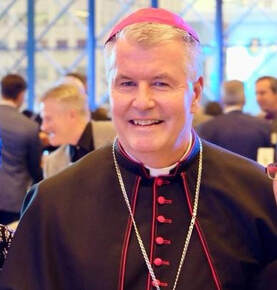 The beginning of a New Year is a time associated with taking stock of the past, looking forward to the future, and making resolutions. Actually this is a continual practice in our lives. Events such as the birth of a child, changing jobs, or simply moving, entail at some level making a new beginning. The embracing of change can be difficult at the time, yet in hindsight, the new beginning is often an event which inspires positive growth in our life. This process of beginning and growing in new ways is also a part of our spiritual journey. Beginning in Baptism, “the person baptized is configured to Christ. Baptism seals the Christian with the indelible spiritual mark (character) of his belonging to Christ.” (Catechism of the Catholic Church (CCC), 1272.) Baptism begins the journey of holiness “to be perfect as your Heavenly Father is perfect” (Matt. 5: 48) and it is restored through the grace received in the Sacrament of Reconciliation which has sometimes been referred to as the sacrament that renews this baptismal state of grace or a type of “Second Baptism”. In the spiritual life, embracing the path of change in our life and seeking sacramental forgiveness involves ongoing reflection and prayer. St. Ignatius of Loyola developed the daily Examen recognizing the importance of beginning anew each day. The Catechism of the Catholic Church speaks about the perseverance to seek continual growth in holiness, saying, "The Church on earth is endowed already with a sanctity that is real though imperfect." In her members perfect holiness is something yet to be acquired: "Strengthened by so many and such great means of salvation, all the faithful, whatever their condition or state - though each in his own way - are called by the Lord to that perfection of sanctity by which the Father himself is perfect." (CCC, 825.) The path of our holiness weaves through many ordinary life events. In his Apostolic Exhortation, Gaudete et Exsultate (GE), Pope Francis encourages the faithful to see life’s challenges as opportunities for new growth saying, “At times, life presents great challenges. Through them, the Lord calls us anew to a conversion that can make his grace more evident in our lives, “in order that we may share his holiness” (Heb 12:10). At other times, we need only find a more perfect way of doing what we are already doing: “There are inspirations that tend solely to perfect in an extraordinary way the ordinary things we do in life.” (GE, 17.) Persevering in our spiritual life has also been expressed by a few saints as Nunc Coepi or Now I Begin. The experience of beginning over and over again is a common path for each of us when we grow in faithful holiness. The emphasis on “Nunc” or “Now” affirms the importance of the present moment and the Grace of God that it holds for each one of us. St. Rose Phillippine Duchesne known for her faith-filled courage and humility, wrote, “Do not look back to the past, or forward to the future. Claim only the present for it holds God’s will.” In Gaudete et Exsultate, Pope Francis writes about the Spirit revealing the Will of God in the present moment - “Always ask the Spirit what Jesus expects from you at every moment of your life and in every decision you must make, so as to discern its place in the mission you have received.” (GE, 23.) As this new year and a new decade begin, my prayer for you is to embrace the mission God entrusts to you and to live the fullness of the present moment so that you will “allow the Spirit to forge in you the personal mystery that can reflect Jesus Christ in today’s world.” (GE, 23.) By Most Reverend William T. McGrattan, Bishop of Calgary
January 2020 Dear Sisters and Brothers in Christ, The holy days of the Christmas season are upon us. This year, at the Vigil Mass for the Nativity of Our Lord, we hear the familiar narrative from Matthew’s Gospel of Jesus’ humble birth among us in fulfillment of the scriptural promises. Joseph, a “righteous man” is faced with a situation he does not fully understand and yet in the simple words of the Gospel, “he did as the angel of the Lord commanded him.” And in that moment, Joseph becomes a model of trusting in God and following His Will. These inspiring events of Mary and Joseph, annunciations and dreams, angels and shepherds, stars and adoring magi serve to captivate our imaginations and invite us to celebrate the profound simplicity of God’s presence among us as a humble and innocent child. The Son of God is born into the human world and gives flesh to God’s saving power. These scripture passages announce hopeful messages of “Peace on Earth,” “Good will to all,” and the absolute steadfastness of God’s promise to save His people. Indeed, such messages of “Good News” are welcomed among the poor, the vulnerable, and all of us who recognize the need for God’s salvific love in our lives. This year Pope Francis, in speaking to the United Nations, offered the following reflection about Christmas: “These are days in which we raise our eyes to heaven and commend to God those people and situations that are closest to our heart. In this gaze, we acknowledge ourselves to be sons and daughters of one Father, brothers and sisters. We give thanks for all the goodness present in this world, and for all those who freely give of themselves, those who spend their lives in service to others, those who do not give up but keep trying to build a more humane and just society. We know well that we cannot be saved alone. … May Christmas, in its authentic simplicity, remind us that the most important thing in life is love.” (Pope Francis, December 20, 2019.) As our communities in Faith look heavenward at Christmas, let us invite the Christ child to be born into our hearts spiritually, to transform our lives, and to strengthen the witness of our faith so that we might grow in humility and confidence as missionaries of charity for our brothers and sisters. May we proclaim His Birth with great joy and announce the saving love of Jesus Christ in the daily living of our lives. I offer you the assurance of my prayers as you gather with family and friends to celebrate these holy days of Christmas. Merry Christmas! Yours in Christ, + Most Reverend William McGrattan Bishop of the Diocese of Calgary December 24, 2019 Written by Bishop William T. McGrattan | December 5, 2019
As the Season of Lent begins, it is a good time for us to seek an interior renewal and to face the distracting attachments and preoccupations that have become part of our often very busy lives. These forty days serve to remind us of Christ’s journey into the desert. The Catechism of the Catholic Church (CCC) tells us that “Jesus' temptation reveals the way in which the Son of God is Messiah, contrary to the way Satan proposes to him and the way men wish to attribute to him. This is why Christ vanquished the Tempter for us: “For we have not a high priest who is unable to sympathize with our weaknesses, but one who in every respect has been tested as we are, yet without sinning. By the solemn forty days of Lent, the Church unites herself each year to the mystery of Jesus in the desert. (CCC, 540) It is this Lenten discipline of penance, renunciation, and detachment which reawakens within us the awareness of our dependence on God and His great love for each of us. While retreating to the desert might be impossible on a practical level, our Lenten observance of penance, abstinence, prayer, and almsgiving helps us to grow in Christ daily and to avoid temptation. In particular, the psalmist’s refrain, “Be still and know that I am God” invites us to be attentive to our times of personal and communal prayer. One of the Desert Fathers, Amma Syncletica said, “There are many who live in the mountains and behave as if they were in the town, and they are wasting their time. It is possible to be a solitary in one’s mind while living in a crowd, and it is possible for one who is a solitary to live in the crowd of his own thoughts.” (Benedicta Ward, The Sayings of the Desert Fathers, Cistercian Publications: 1975, p. 19) Listening to God in prayer is an important part of a life of faith. God desires to speak to us and we have the privilege of listening to the promptings of His Spirit through the consolations and desolations with which He graces us during our prayer. William Barclay’s reflection on prayer and silence is often quoted as follows, “… Prayer is a way of offering ourselves to God in order that He should be able to make use of us. It may be that one of our great faults in prayer is that we talk too much and listen too little. When prayer is at its highest, we wait in silence for God's voice to us; we linger in His presence for His peace and His power to flow over us and around us; we lean back in His everlasting arms and feel the serenity of perfect security in Him.” The psalmist writes in Psalm 46, “Be still, and know that I am God! I am exalted among the nations, I am exalted in the earth. The Lord of hosts is with us; the God of Jacob is our refuge.” Walter Brueggemann, a well-known scholar of the psalms, says that some psalms were written for the good times while others were written for the times when the future seemed uncertain and perhaps filled with impending troubles. These psalms were written for people living in times of change and uncertainty who were experiencing feelings of anxiety and even dismay. (The Spirituality of the Psalms, Brueggemann, pp. 19-25.) Psalm 46 provides the reassurance that God is stable when all else seems unstable. At a deeply personal and spiritual level, this is important for each of us. This is the deeper experience of prayer and listening which the time of silence and stillness offers to us. “In the silence of the heart, God speaks. If you face God in prayer and silence, God will speak to you. Then you will know that you are nothing. It is only when you realize your nothingness, your emptiness, that God can fill you with Himself. Souls of prayer are souls of great silence.” (Saint Teresa of Calcutta, In the Heart of the World: Thoughts, Stories and Prayers) Let us embrace this season of Lent as a time to “be solitary in one’s mind.” (Benedicta Ward, Ibid.) If we allow God’s grace to renew our hearts during this Lenten season through prayer, then in the solitary stillness of such experiences we will know His great love, wisdom, and charity and be moved more generously to witness and share this with others. Vertical Divider
Most Reverend W. T. McGrattan, D.D., Bishop of Calgary
May 2019 Picture: Rest on The Flight into Egypt, c. 1510 by Gerard David For Flory D’Souza the Outdoor Way of the Cross is a family affair. Her father Antonio Carvalho carried the cross in the procession a few months before he died. At 91, with a cane in one hand, the cross on his opposing shoulder, he carried the cross right to the very end of his life. “I took a picture of him carrying the last station of the Cross and I got it printed while he was in the hospital. Everyone could not believe that was my Dad,” said Flory, picturing the scene four years ago. “For him it was just because he was a man of faith and I think a little way of saying: Jesus I’m helping you carry your cross and carrying my own cross with His. It gave him fulfilment in being part of the Good Friday event,” said Flory. For 20 years Flory’s parents Antonio and Annie made the Good Friday pilgrimage through the city. Now at 83, Annie is unable to participate anymore, but Flory fondly remembers how important this pilgrimage was for her parent’s spiritual lives — a spiritual practice she plans to carry on. “When my dad was interviewed by a reporter he was asked: ‘You are such a small man and you carry such a heavy Cross?’ His answer was: ‘My Jesus helps me.’ I thought what a sweet answer,” said Flory. “When I’ve carried the cross I’ve found it heavy, but I think it’s the weight of our sins that makes it heavier,” she said. “It has helped us know that we all have a cross to carry, but Jesus helps us to carry that cross. And He never gives us a cross too heavy to carry. It helps our faith, to go on and trust in God and be thankful that Jesus did what He did for us to be free.” Flory has carried the Cross a number of times and has consistently attended the pilgrimage for the last decade. Since she has never been to the Holy Land she sees this as her opportunity to walk in the footsteps of Christ. “This just means so much. The stations take you to human suffering. It was Jesus’ suffering in Calvary, but here in every station is some kind of human suffering and you are made aware of it,” she said. Flory is no stranger to suffering. Two years after her father’s death, her husband John suddenly died at the age of 57. “My strong Catholic faith, thanks to my parents, has helped me cope with my cross in life and these great losses,” she said. Flory immigrated on her own to Calgary 30 years ago from Kenya. Of her five siblings, she sponsored her sister in 1992 and three years later her parents. Then eight years ago she sponsored her brother Alex Carvalho. He volunteers with crowd control for the pilgrimage. From humble beginnings, the Outdoor Way of the Cross has grown to attract between 2,500 and 3,500 pilgrims, some from other faith traditions. And more than 200 volunteers help keep it running smoothly.
Written by Sara Francis
Most Reverend W. T. McGrattan, D.D., Bishop of Calgary
April 2019
|
Author
Catholic Pastoral Centre Staff and Guest Writers Archives
July 2024
Categories
All
|
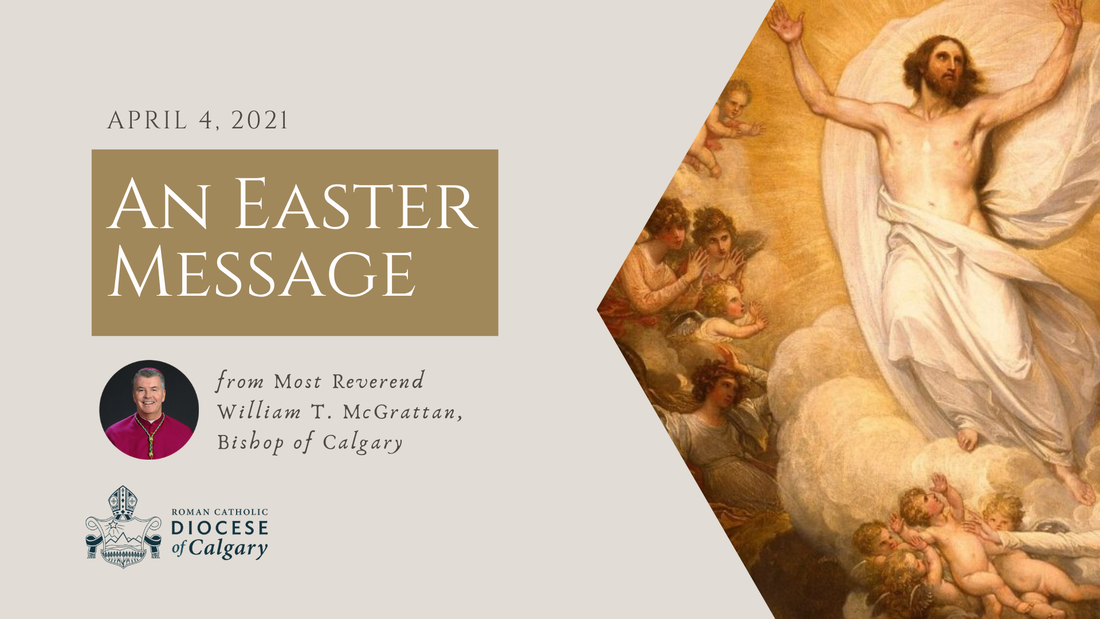
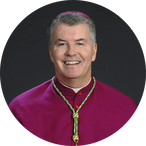

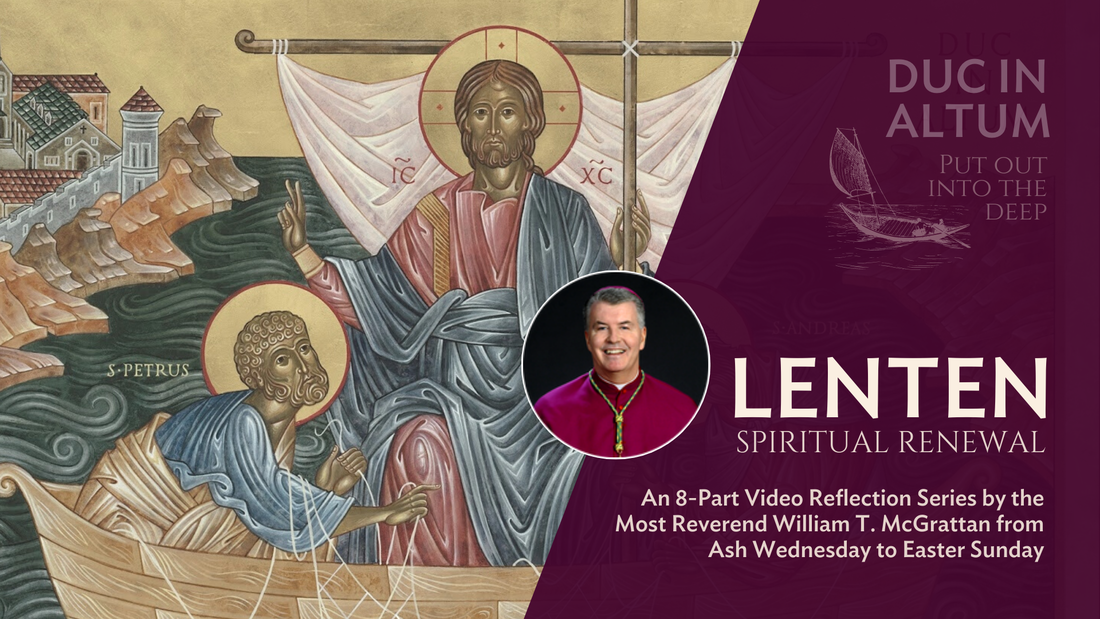
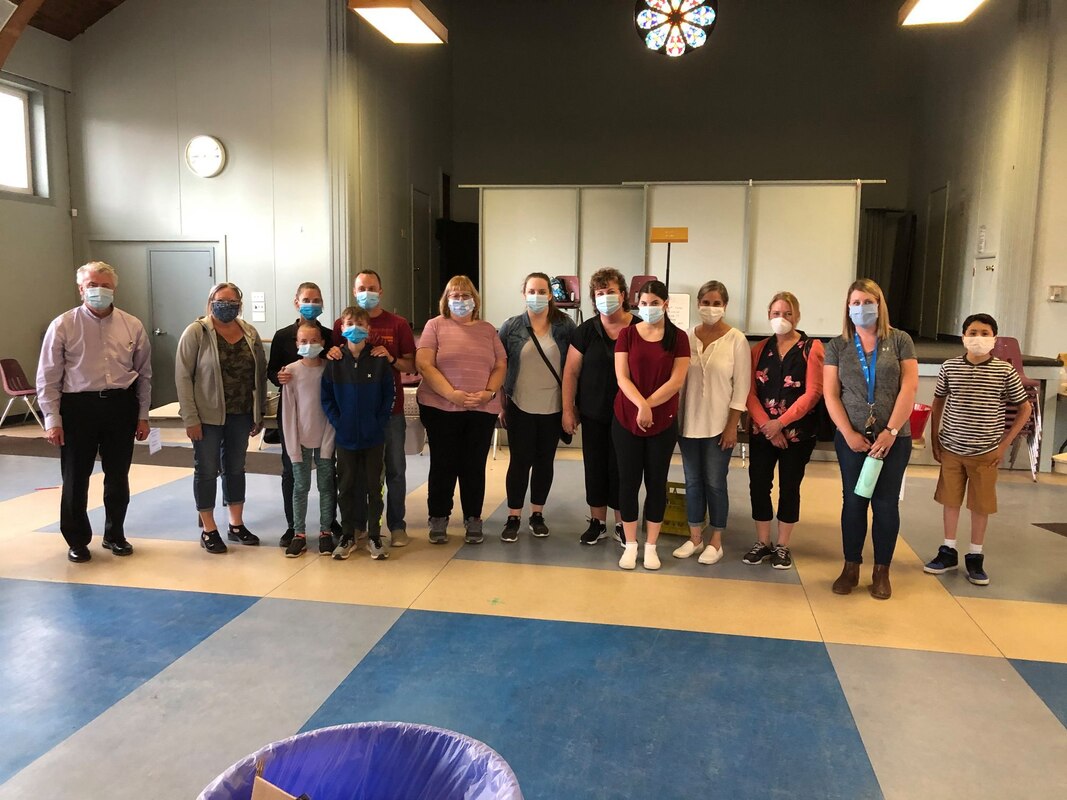
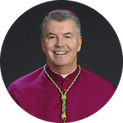
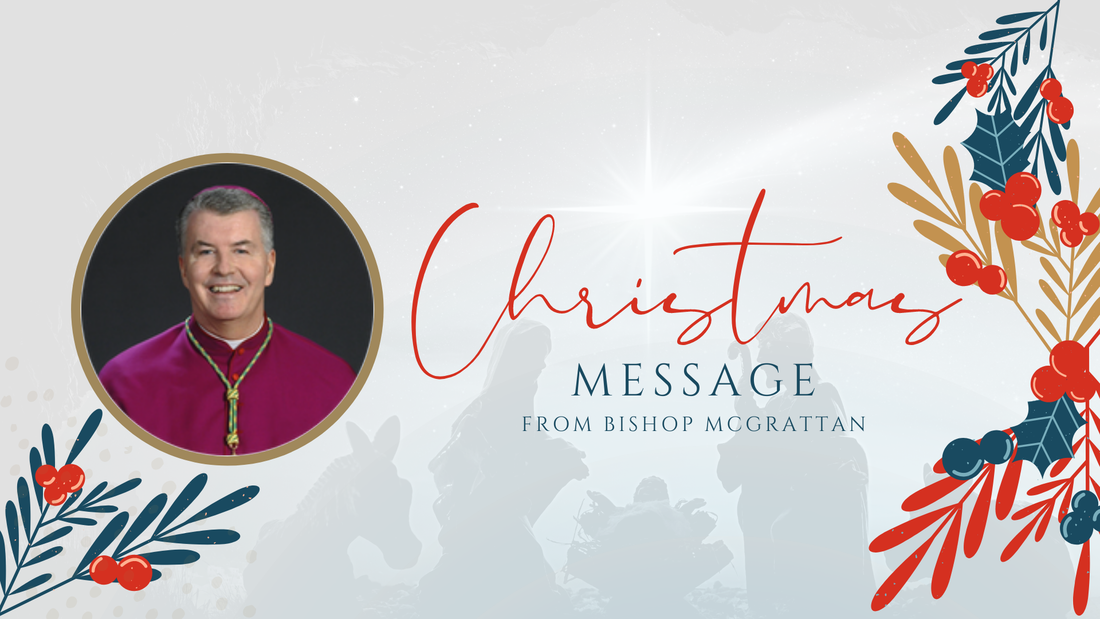

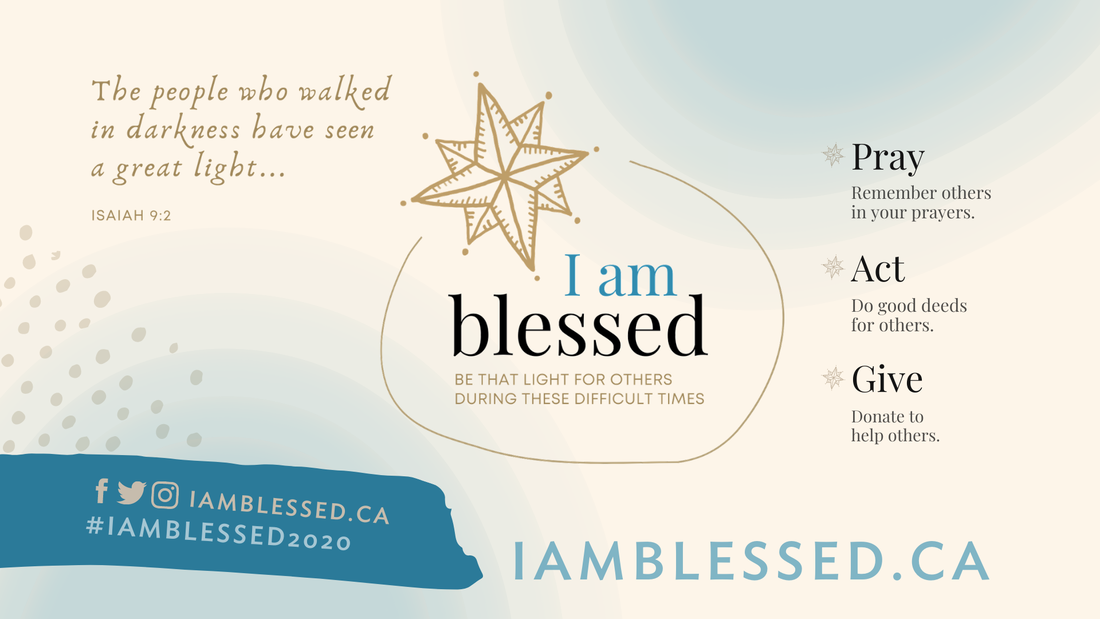
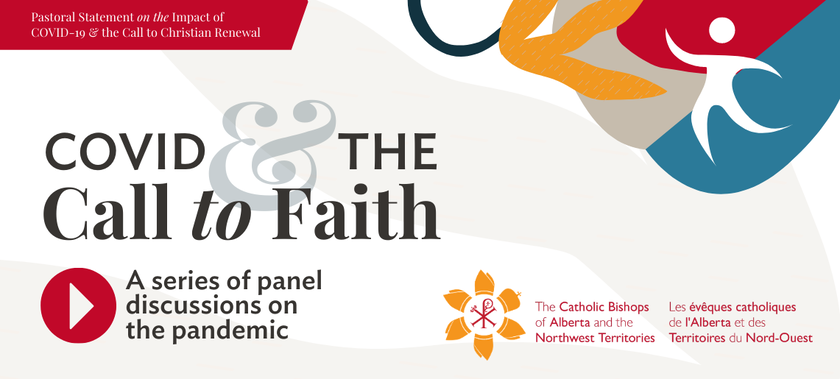
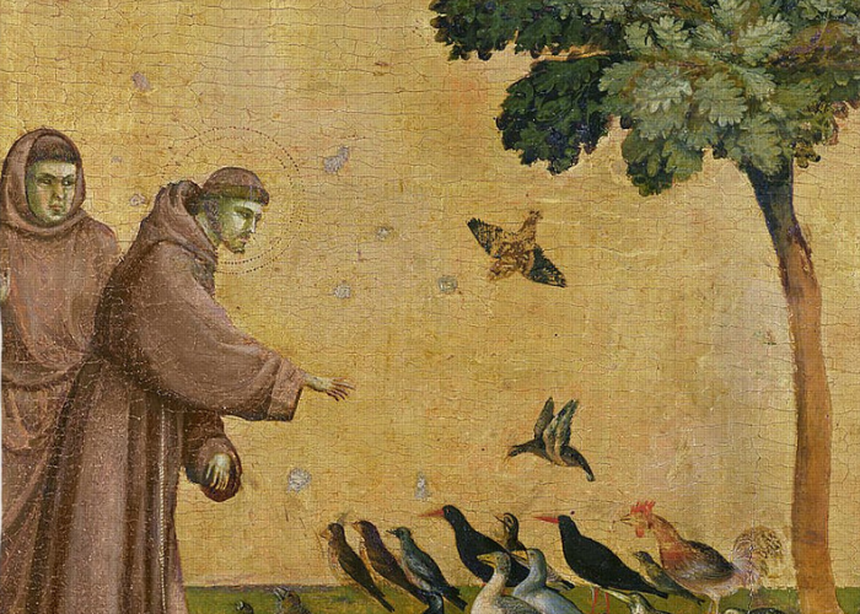
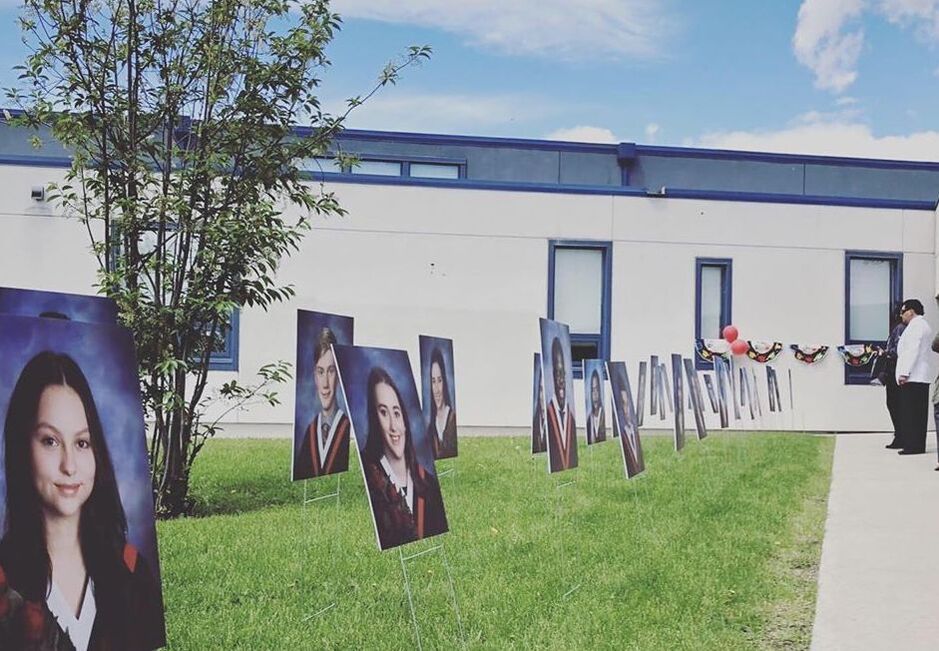

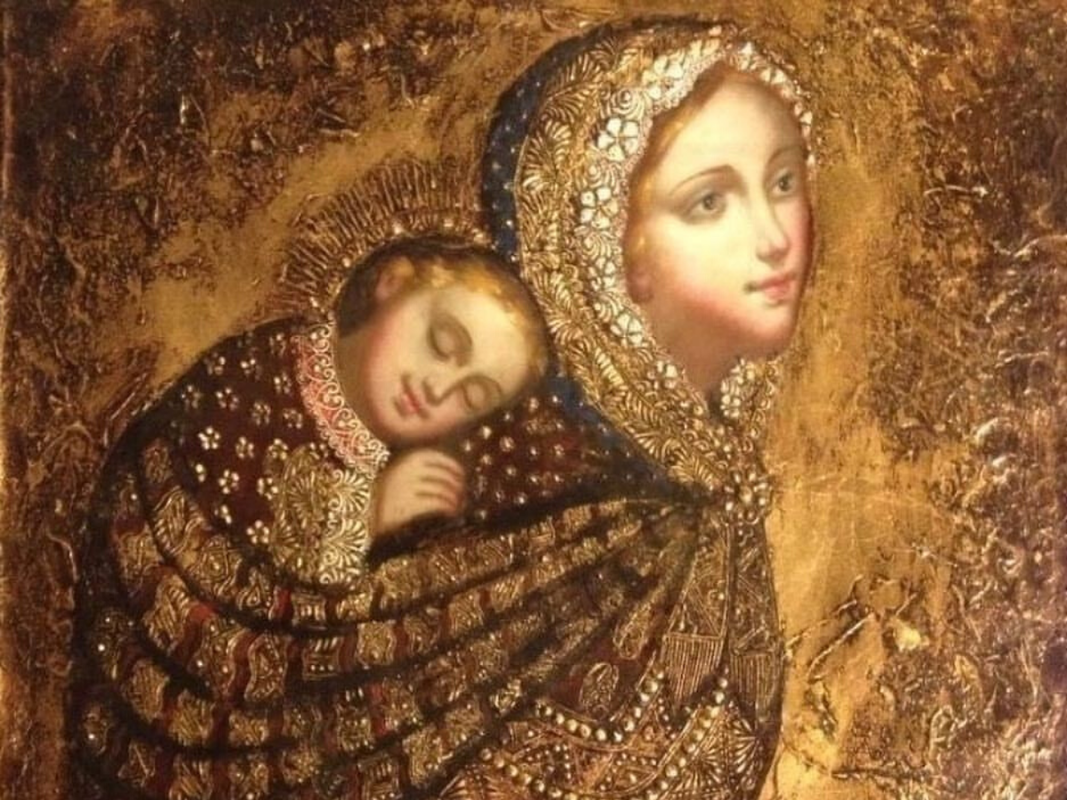
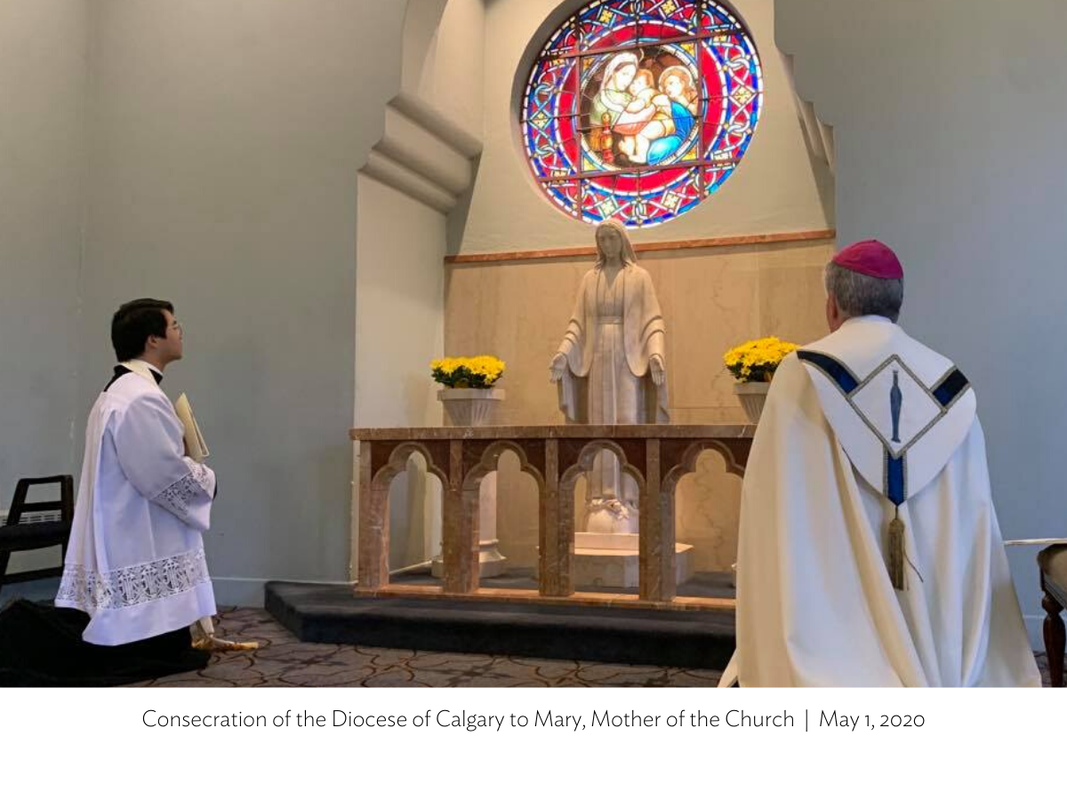
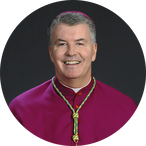
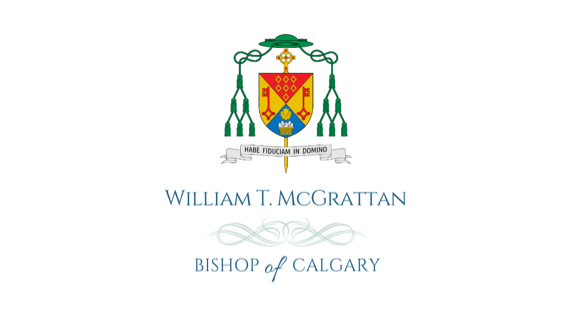
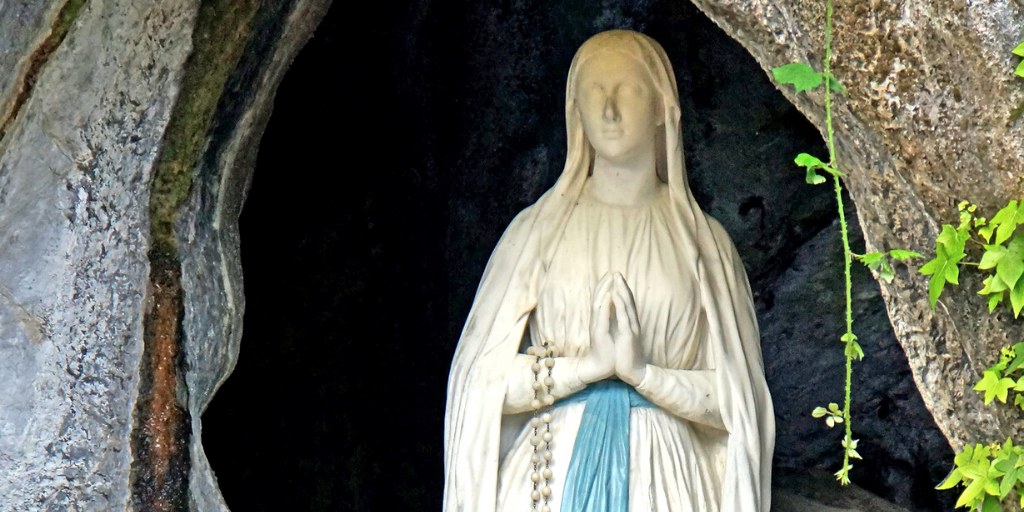
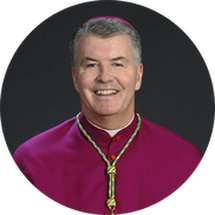
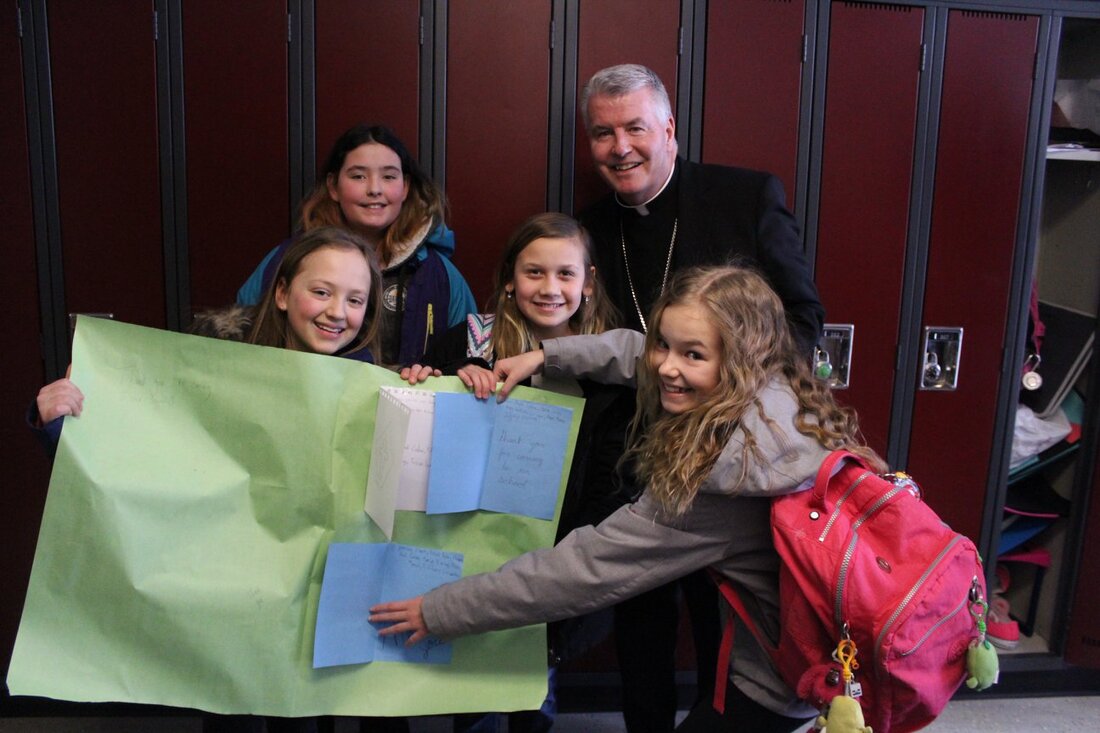
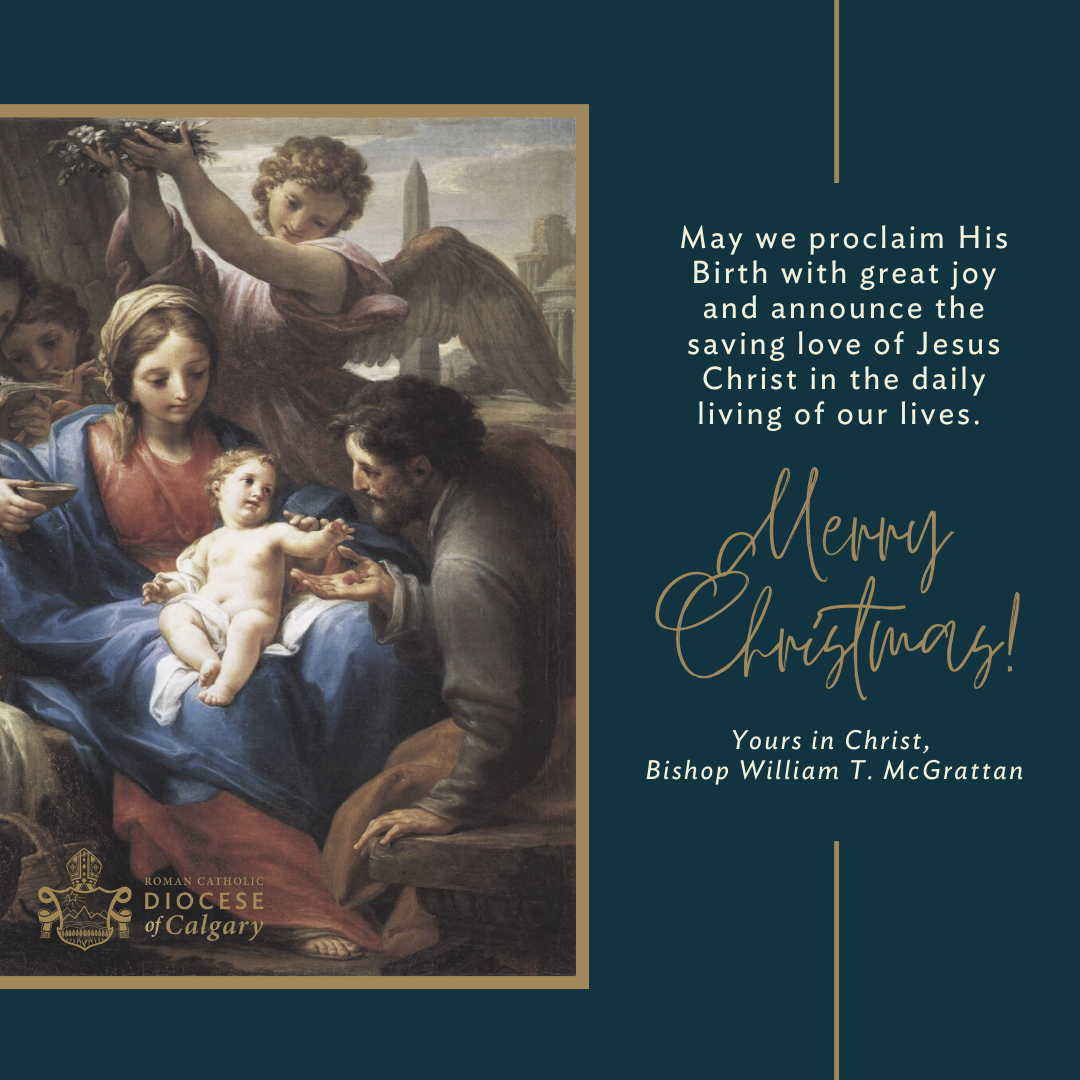
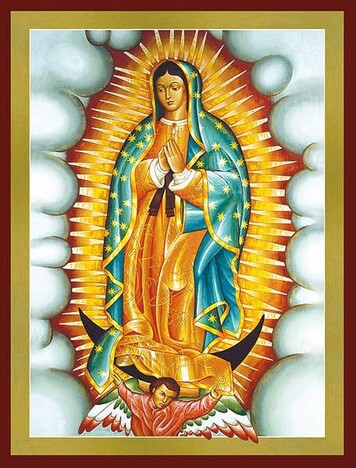
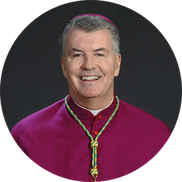
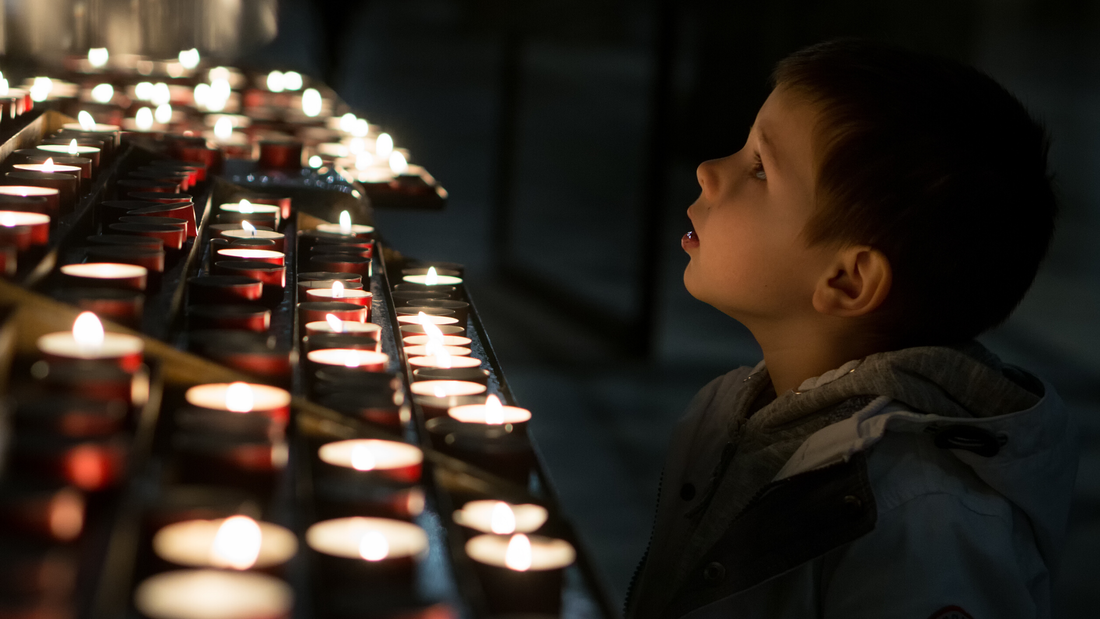
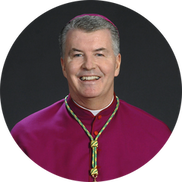
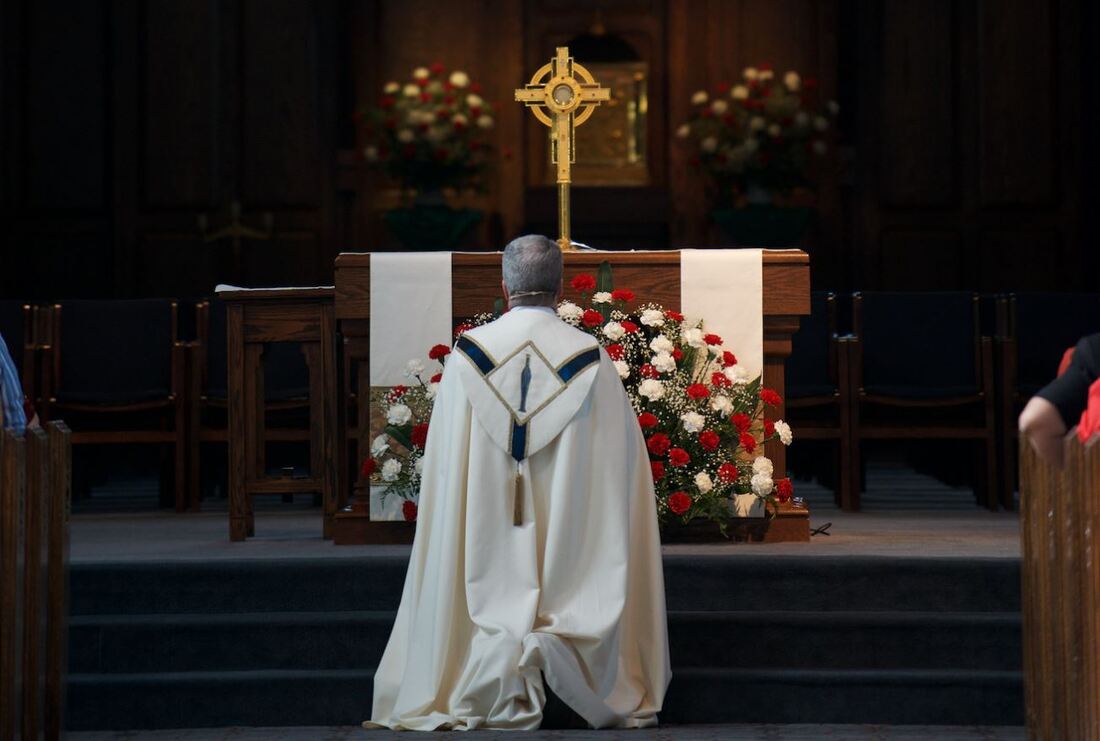
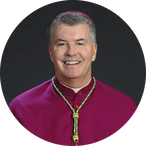
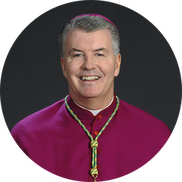
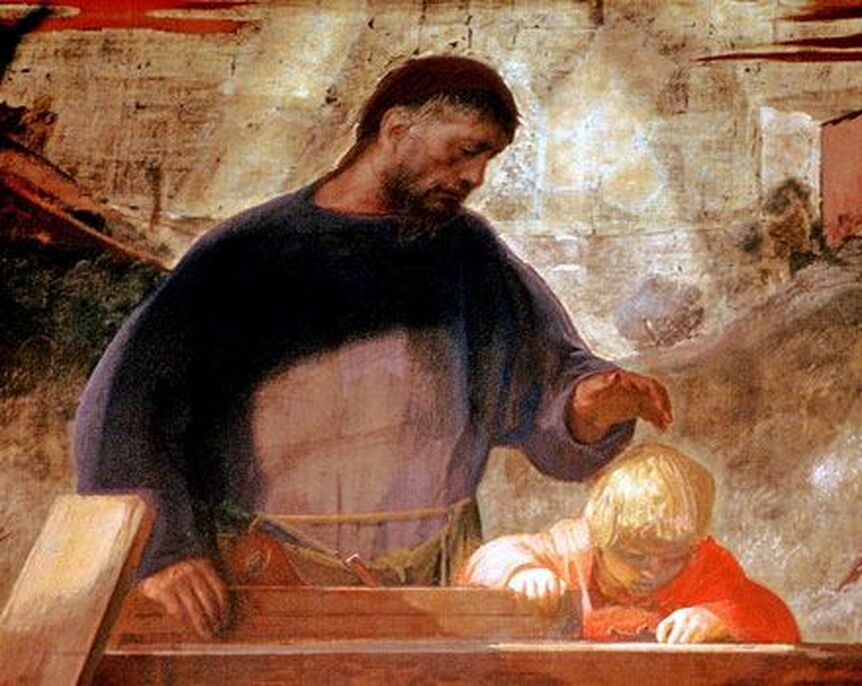
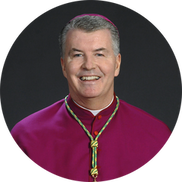
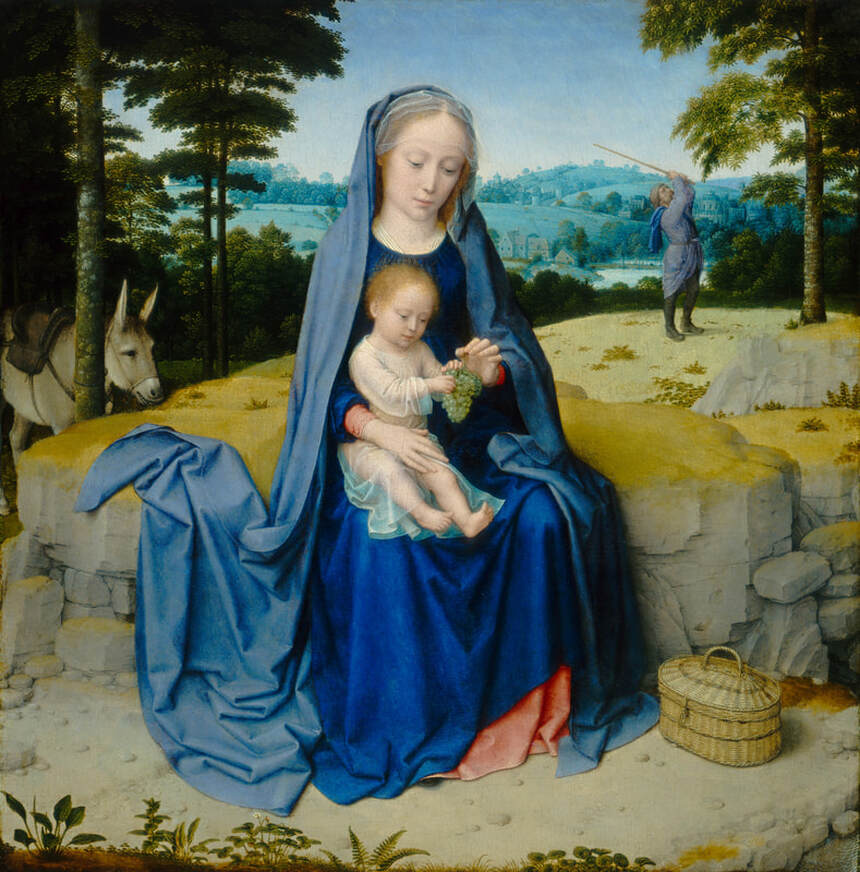
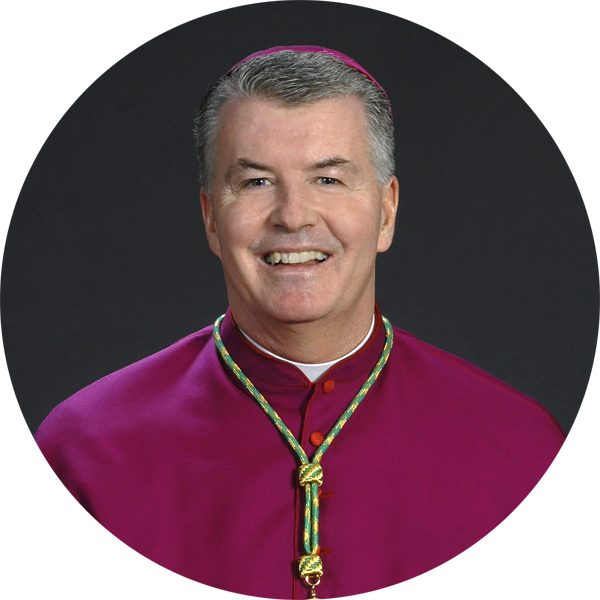
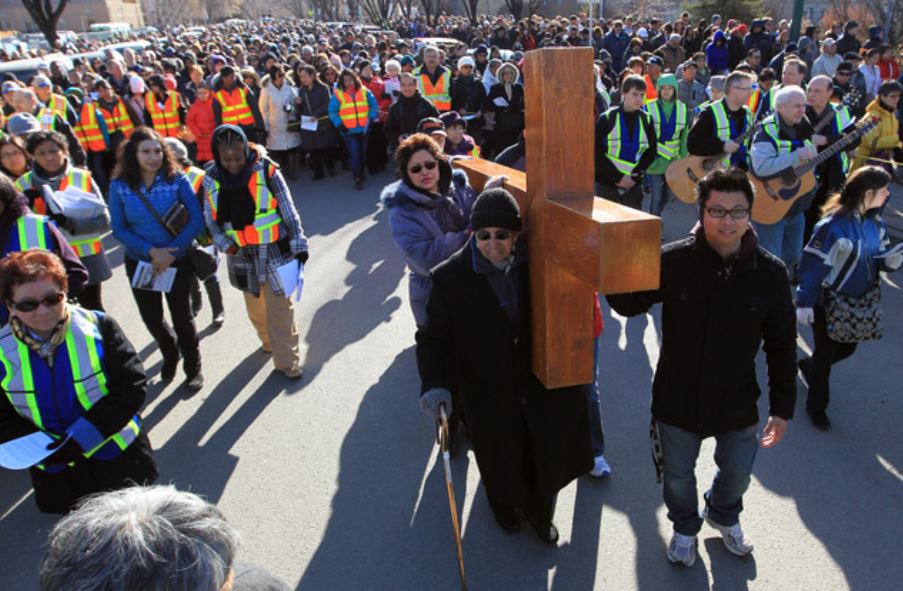
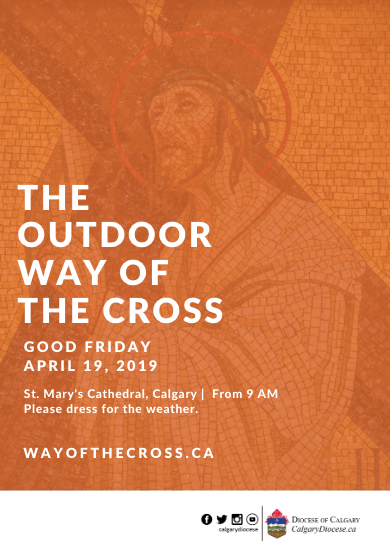
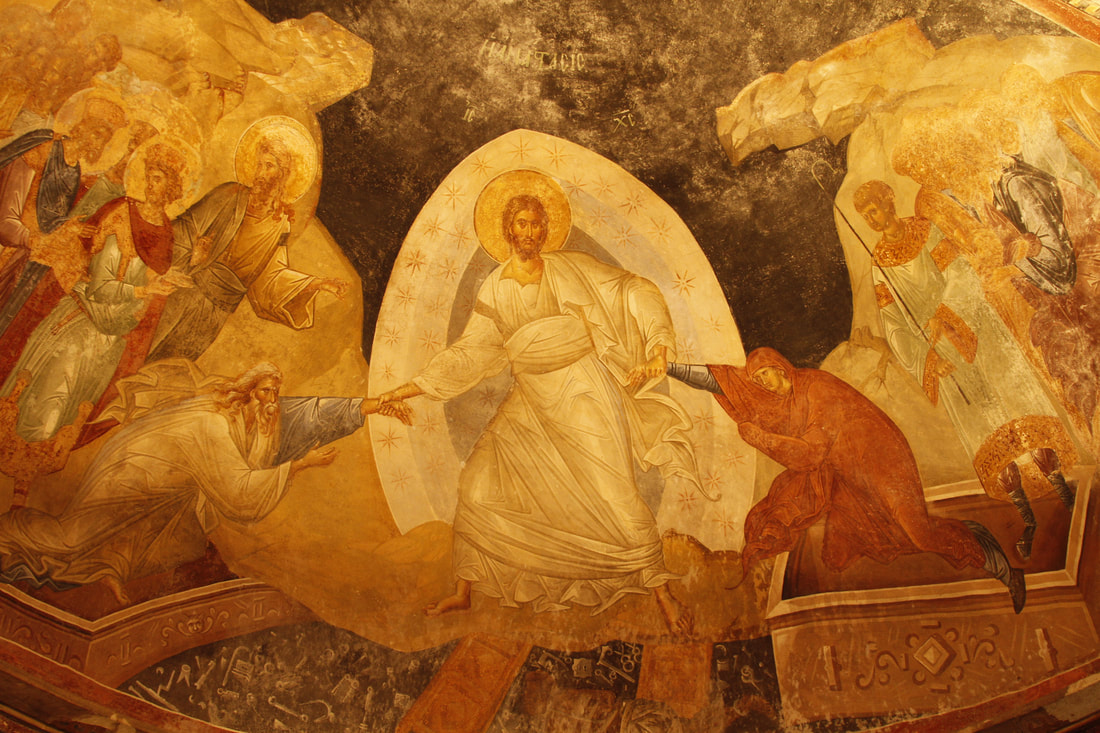
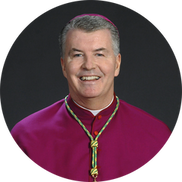
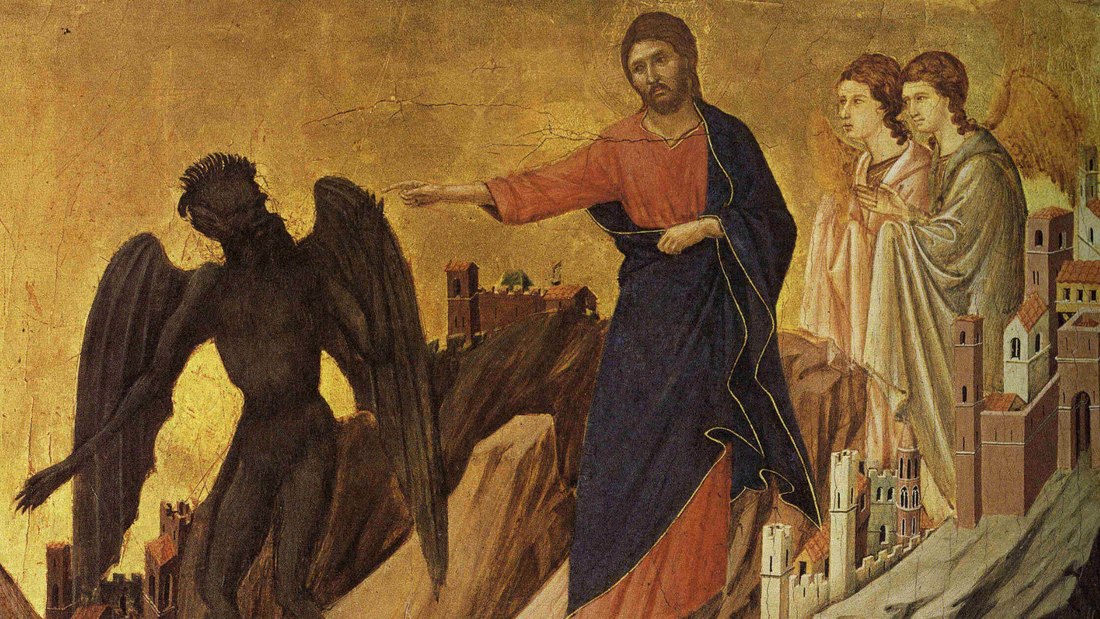

 RSS Feed
RSS Feed